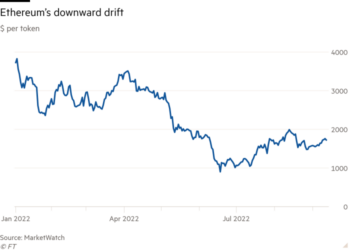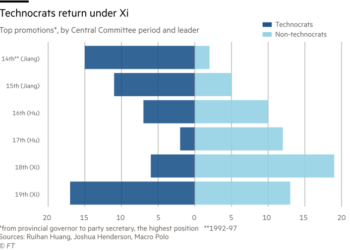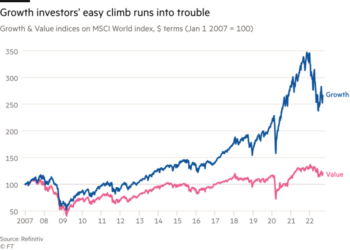Metaverse? What metaverse? Anyone who tuned into the keynote speech at Apple’s annual developer conference this week expecting a glimpse of a more immersive, 3D digital world would have been sorely disappointed.
Contrary to widespread expectations, there was no mention of either Apple’s much-anticipated augmented reality headset, or of ARKit, the software platform that will let developers create apps to run on the device.
The metaverse suffered from the same surprising lack of prominence at the Google and Microsoft developer events over the past month. Whatever plans these companies have been laying for what could turn into the most important advance in computing since the smartphone, it wasn’t something they were ready to shout about.
The annual developer conferences are an important moment for the leading tech companies to galvanise the world’s software developers into creating applications capable of drawing billions of people to their platforms. After all the anticipation, their collective caution on the metaverse was notable.
The silence left the inevitable impression that the companies still think it’s too early to bring this technology to a mass market — or, at least, that they have not worked out how it fits into their own businesses. Only Meta, which is hunting for a new future beyond its Facebook social network, has been pushing hard on the idea.
The recent caution suggests that the industry is still grappling with two problems that have hung over the arrival of the metaverse. One has been the difficulty of coming up with a headset that large numbers of people will want to wear for significant periods of time.
It is a decade since Google unveiled its Glass, an attempt at a lightweight augmented reality device. It is also eight years since Facebook bought VR company Oculus and seven years since Microsoft showed off HoloLens, its ski goggle-like AR headset.
Yet it is still no clearer where the future lies: in bulky, fully immersive VR, stripped down glasses, or something in between? Like the smartphone world before the arrival of the iPhone, the tech industry is still awaiting the device that will point the way to a future of visual-first computing.
A second reason for the caution on the part of most of Big Tech is that the metaverse remains beyond clear definition. It is easy to understand full-on VR worlds. It is much harder to anticipate less immersive methods of merging the virtual with the real. Will it involve pasting digital information over the physical world, like the displays for fighter pilots? Being entertained in front of the digital equivalent of a giant IMAX screen? Or interacting with avatars of other people that appear to be real?
Pushing developers too soon towards a half-baked vision could backfire, as Google found in 2012, when it revealed Glass. The open invitation to developers to start creating led to plenty of wasted effort and came no closer to revealing the augmented reality future.
Meta is promoting full immersion in VR. But the average user may not find much of this compelling: A business meeting in VR for people who appear as avatars without legs — something it demonstrated three years ago — risks appearing both banal and creepy.
There are likely to be clearer uses when it comes to specific corporate applications. Microsoft, for instance, has pushed hard on the idea of companies creating “digital twins” of their office building or manufacturing processes, so that they can make models of how changes might affect their businesses.
But for most people, it is less obvious what applications will seem important enough to make it worth donning a special headset. The result has been a surprisingly cautious approach by Big Tech.
Google’s sole reference to augmented reality at its event this year came with the demonstration of a simple translation app, making it possible for someone wearing a pair of smart glasses to see subtitles while watching someone talk in a different language. The contrast with the flashy introduction of Glass a decade ago was stark.
For now, it makes sense to hold back. Apple is reported to be working on a small number of demonstration projects that would show off its AR goggles to the full. It is still possible that it will unveil the much-anticipated headset later this year.
Most of the big tech companies are tiptoing towards the metaverse. But make no mistake: when the starting gun is finally fired, the race to dominate the next mass market computing platform will be ferocious.











